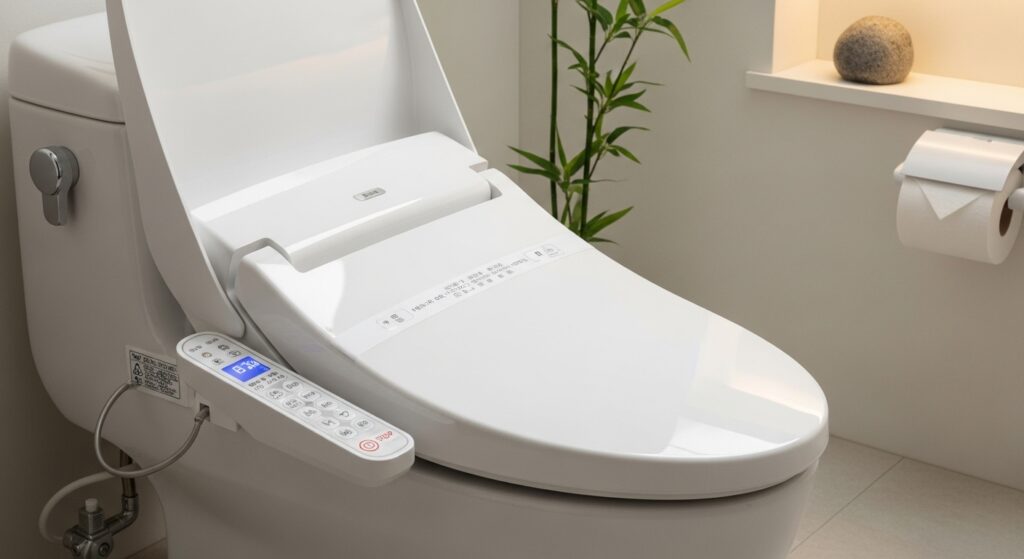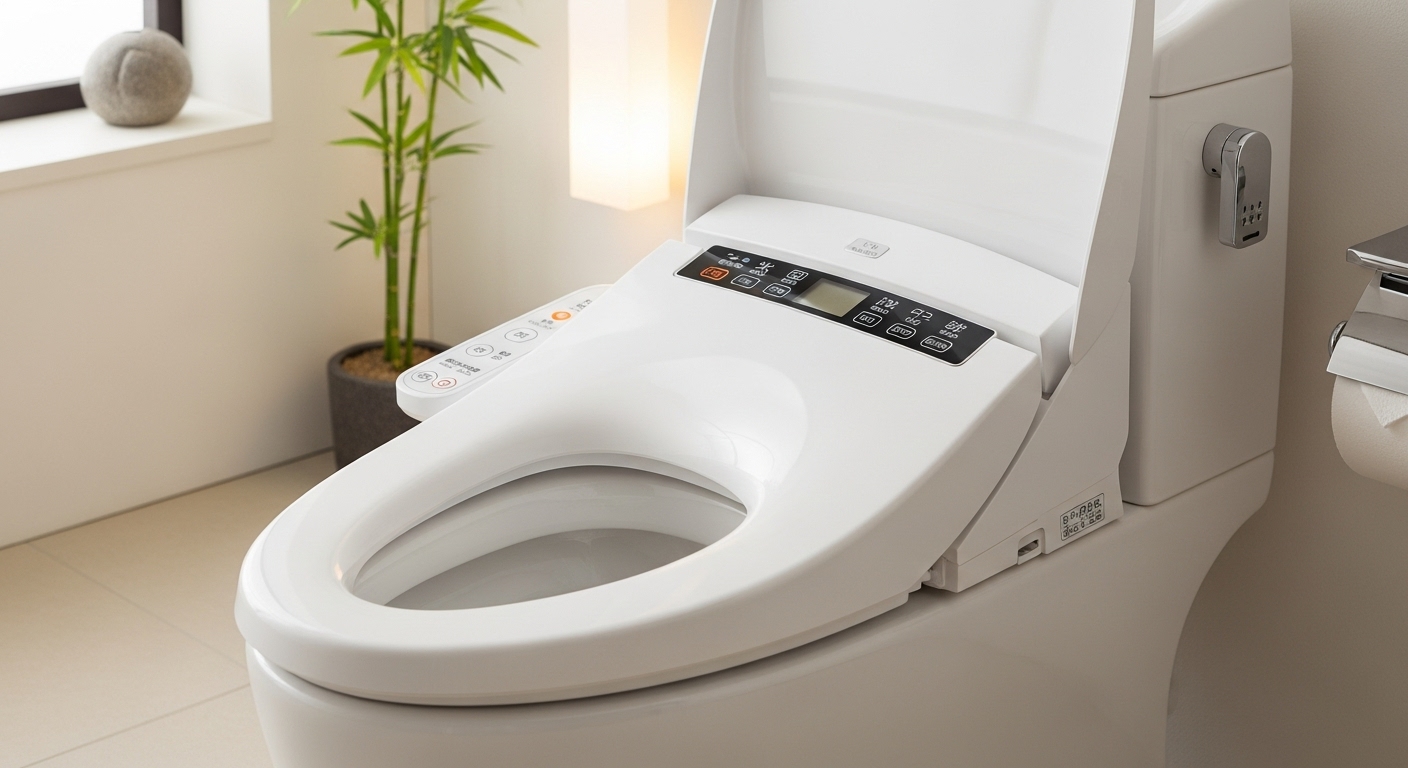If you’ve ever landed in Japan and made your first cultural discovery in a restroom, you’re not alone. Japanese toilets are more than plumbing—they’re everyday design. They blend engineering, hospitality, and a surprising amount of joy. Here’s why they deserve a place in the museum (and how to actually use one without pressing the wrong button).
Form Meets Function: The Washlet Decoded
Modern Japanese toilets (often called washlets) turn a basic human need into a polished user experience:
- Heated seat that greets you—no winter shock.
- Bidet & rear wash with adjustable pressure and angle.
- Warm-air dryer to finish comfortably.
- Deodorizer & auto-flush to keep things fresh and hands-free.
- Otohime (sound mask) that plays gentle noise to protect privacy.
- Self-cleaning nozzles and anti-bacterial materials built in.
Each feature solves a small problem; together they make a routine moment unexpectedly…nice.
The Design Philosophy: Omotenashi You Can Feel
In Japan, design isn’t only about how something looks; it’s about how respectfully it treats you. Restrooms reflect omotenashi (thoughtful hospitality) and monozukuri (craftsmanship). Doors close softly. Surfaces are easy to clean. Buttons are reachable. Lighting is calm. It’s the same spirit you’ll find in a tea ceremony or a Zen garden: comfort through considered details.
Cleanliness, Comfort—and Sustainability
Bidets can reduce paper usage; auto-flush minimizes contact; self-cleaning keeps hygiene high. Many models use efficient water cycles and targeted cleansing so comfort doesn’t require waste. It’s a rare intersection of hygiene, dignity, and resource awareness—another reason these toilets feel like design objects, not utilities.
Button Guide: What Those Symbols Actually Mean
A quick cheat-sheet so you can relax and…focus.
- 止 (Stop): Stop all water/air functions.
- おしり / Rear: Standard wash for the rear.
- ビデ / Bidet: Gentle wash (often for front).
- 水勢 / Pressure: Adjust spray strength (look for plus/minus).
- 温水 / Water Temp & 便座 / Seat Temp: Temperature settings.
- 乾燥 / Dryer: Warm air.
- 流す / Flush or 大 / 小 (Large/Small): Large = solid waste; Small = liquids.
- 音姫 / Otohime: Privacy sound.
Tip: If you can’t read kanji, look for icons (spray symbols), “Stop” in English, or a panel on the wall. In doubt, Start → Adjust → Stop. You’ll be fine.

Etiquette 101: Do as Locals Do
- Toilet slippers: In some homes/ryokan, change into the dedicated slippers.
- Don’t flush trash: Tissues, wipes, sanitary items go in the bin.
- Keep it tidy: Wipe small splashes; leave the space as you found it.
- Queue kindly: Restrooms can be busy; a small nod goes a long way.
Where to Try the Best Ones (and What to Expect)
You’ll find high-spec toilets at airports, major train stations, department stores, newer shopping malls, and modern hotels. Many traditional venues (temples, old cafés) keep things simpler; some older facilities still have squat toilets—a cultural throwback that’s good to know about.
From Toilets to Culture: Experience Japan Beyond the Bathroom
If you loved the thoughtfulness in a restroom, wait till you try it across Japanese culture:
- Feel the same quiet precision in a Zen Tea & Calligraphy session.
- Explore playful visual storytelling in Inside Japanese Manga.
- Create and take home good luck with Paint Your Own Daruma.
- Taste everyday comfort in a Hands-On Onigiri Workshop.
- Meet modern street style and self-expression in a Gyaru Makeover (limited pop-ups).
Book your spot with Crazy Escape and turn smart design into unforgettable memories—well beyond the bathroom.
Quick FAQ
Are Japanese toilets hard to use?
Not really—most panels have icons and an English “Stop.” Try, adjust, stop.
What do “大 / 小” mean on the flush?
Large and small flush. Use 小 (small) for liquids; 大 (large) for solids.
Will I only find high-tech ones?
No. Many are advanced, but older facilities may be basic or squat-style. Consider it part of the adventure.
Key Takeaways
- Japanese toilets are human-centered design in daily life.
- They embody hospitality, cleanliness, and subtle joy.
- Learn the simple buttons and basic etiquette, and you’ll appreciate Japan even more.
- If this level of care impressed you, book a culture experience—the same design mindset runs through tea, calligraphy, food, and fashion.

